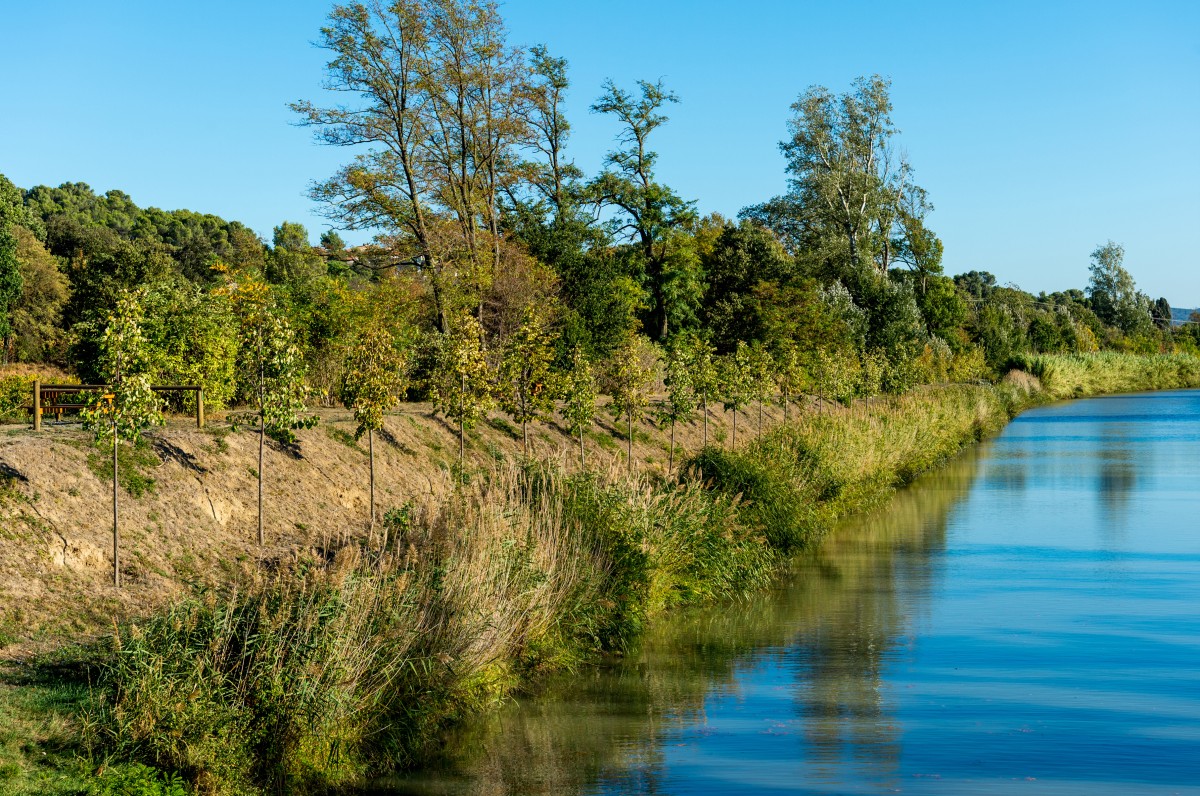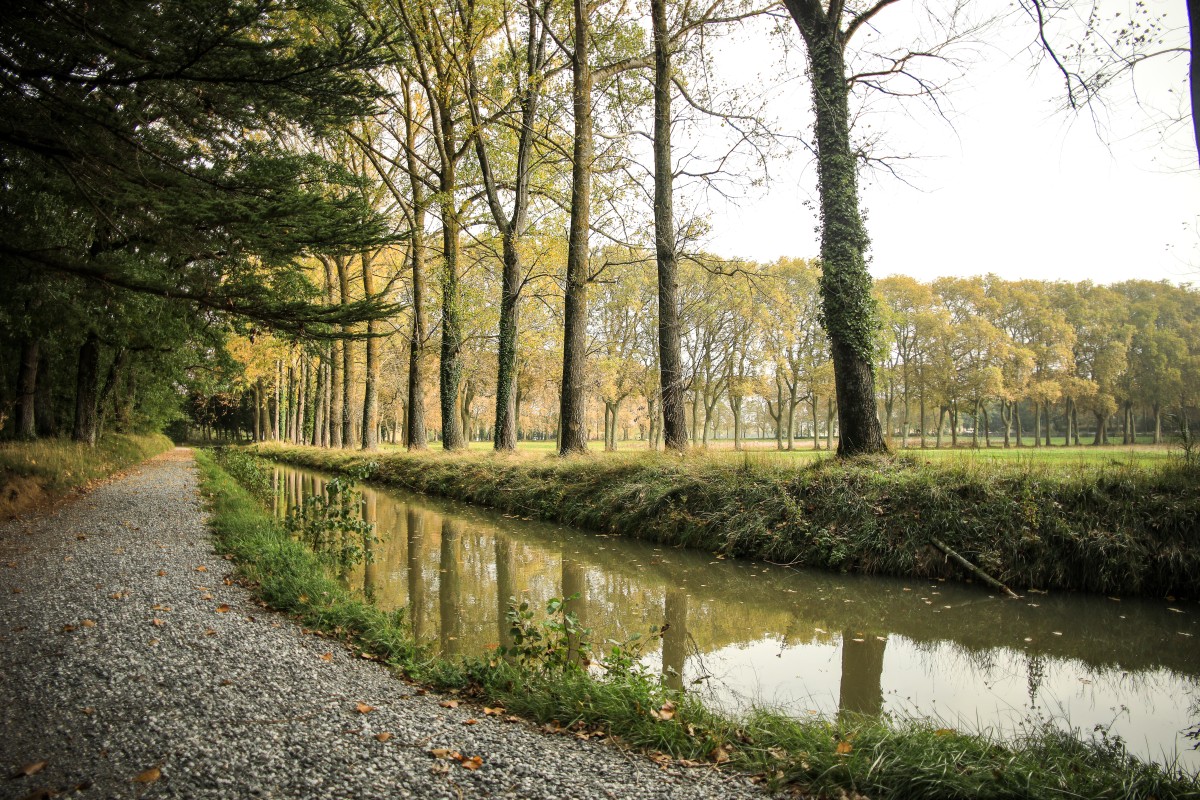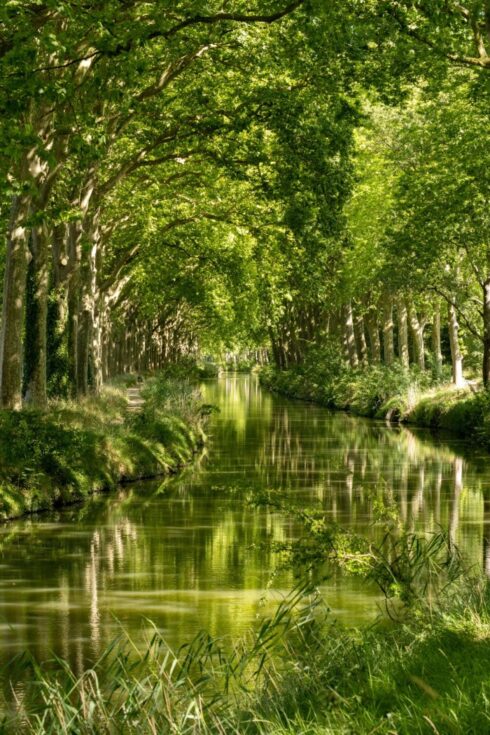Canker stain
What is canker stain?
Canker stain is a microscopic fungus that attacks only plane trees by blocking their sap ducts and killing them in just 6 months to 5 years. The disease is spread either by water and boats that repeatedly damage the trees when mooring, or by the trees’ intertwining root systems.

Where does canker stain come from?
The disease’s presence in France dates back to the Allied troop landing in Provence in 1945. The American soldiers’ ammunition boxes were made of wood from plane trees that was already infected with canker stain, which then spread slowly throughout the south of France before reaching the Canal du Midi, in Villedubert (Aude) near Carcassonne, in 2006.
Can the disease be treated?
Extensive research conducted by the INRA (Institut National de la Recherche Agronomique) in particular has failed to treat the disease both chemically and biologically. To this day, there is therefore only one solution: cutting down and burning the infected trees and replanting new species that cannot be attacked by canker stain.
Over the past 15 years, more than half of the 42,000 trees along the Canal du Midi have had to be cut down.

Our actions to preserve the Canal du Midi
The rows of trees along the canal, 90% of which are plane trees, are currently threatened by canker stain. In response to this emergency situation, Voies Navigables de France has developed a specific project to restore the Canal du Midi, which is being carried out in 4 stages.
Stage 1: Cut down infected or dead plane trees
Almost half of the 42,000 plane trees along the Canal du Midi have had to be cut down and burned on site. As there is no treatment for canker stain, this is the only way to stop it from spreading further. This also helps to prevent accidents caused by dead branches or trees falling onto towpaths.

Stage 2: Replant the canal with various species.
The very first trees were replanted in 2011 in Aude, at the port of Trèbes and the Villedubert section, but today the three departments of Aude, Hérault and Haute-Garonne are involved in the project.
The replanting program favors new species for their:
- Height (tall standard stock)
- Shading capacity
- Resistance to canker stain
- Ability to form a high, shaded canopy along the entire canal.
A total of seven intercalar species were selected: hackberry trees, Norway maple, small- and large-leaved linden, European hop-hornbeam, white poplar, stone pine and a so-called “milestone” species, the Turkey (or Austrian) oak, which will create new lines of trees along the canal from Toulouse to Marseillan.
The trees are replanted every winter between December and March.

Stage 3: Rebuild the banks
The intertwining roots of plane trees provided support for the banks of the canal. Tree felling and removal of stumps can weaken the banks and cause them to collapse. Two types of operation are carried out:
- Reforming the embankments with semi-aquatic plants (rushes, iris, sedge, Salicornia, etc.)
- And for the most badly damaged sections, installing boards and posts along the banks of the canal
Reinforcing the banks of the canal is generally done in dry winter periods, especially as the canal is not being used at this time.

Stage 4: Protect animal biodiversity
The Canal du Midi is home to an extremely rich biodiversity. There are 280 animal species and at least 60 plant species (European roller, little owl, Eurasian scops owl, etc.).
“Flora and fauna” inventories, managed by Voies Navigables de France, have shown that the disappearance of plane trees has destroyed the habitats of certain protected species, including birds and bats that were living in the crevices of the trees.
To make up for this, a large-scale installation of nesting boxes and bat shelters is underway.

Key figures
of the replanting program
Thanks to state / community funding and donations, the replanting program is making good daily progress.
nesting boxes installed since 2006

km of riverbanks restored since 2011

trees replanted since 2011
plane trees felled since 2006

Carefully selected species for replanting
To maintain the canal’s tree canopy, the replanting program favors new species that have been chosen for their height and shading capacity. The replanting program also respects the Canal du Midi’s iconic plant pattern, with its symmetrical alignment that is planted at 7 to 8-meter intervals, and a single species is planted along each stretch (except in certain specific cases).
Protective measures
Fighting against canker stain is a race against the clock. The priority is to detect infected trees as quickly as possible so they can be cut down and burned on site, while recovering chips, branches and twigs so as to prevent any further spread. This meticulous and complex process requires specialist intervention.
No felling during certain periods
Plane tree felling operations follow a strict schedule that takes the most sensitive periods into account, particularly for birds (nesting / breeding) and bats (overwintering, birthing and rearing of young).
Felling may only take place during two periods:
- from February 15 to April 15
- then from August 15 to November 15.

Things to avoid doing
Each of us (pedestrians, cyclists and boat users) also has a role to play in the fight against canker stain.
On the water and on the banks, there are certain things that we simply mustn’t do:
- collide with the banks when mooring or turning around,
- moor onto plane trees,
- plant stakes or use mooring posts without disinfecting them first,
- collect wood and branches,
- have picnics under plane trees,
- carve into tree bark,
- touch the trees or rest bicycles against them, etc.





